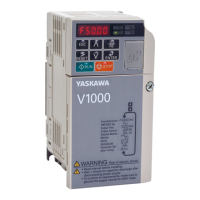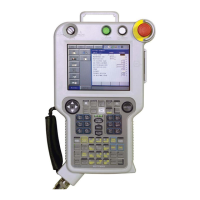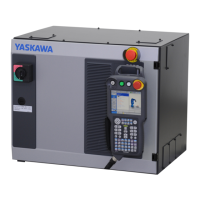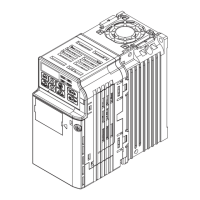6.2 Motor Performance Fine-Tuning
This section offers helpful information for counteracting oscillation, hunting, and other problems that occur while performing
a trial run. Refer to the section below that corresponds to the motor control method used.
Note: This section describes commonly edited parameters that may be set incorrectly. Consult Yaskawa for more information on detailed settings
and for fine-tuning the drive.
u
Fine-Tuning V/f Control and V/f Control with PG
Table 6.1 Parameters for Fine-Tuning Performance in V/f and V/f w/PG
Problem Parameter No. Corrective Action Default
Suggested
Setting
Motor hunting and
oscillation at speeds
between 10 and 40 Hz
Hunting Prevention
Gain Setting (n1-02)
• Reduce the setting if insufficient motor torque relative
to the size of the load causes hunting.
• Increase the setting when motor hunting and
oscillation occur with a light load.
• Reduce the setting if hunting occurs when using a
motor with a relatively low inductance, such as a high-
frequency motor or a motor with a larger frame size.
1.00 0.10 to 2.00
• Motor noise
• Motor hunting and
oscillation at speeds
up to 40 Hz
Carrier Frequency
Selection (C6-02)
• Increase the carrier frequency If the motor noise is too
loud.
• Lower the carrier frequency when motor hunting and
oscillation occur at speeds up to 40 Hz.
• The default setting for the carrier frequency depends
on the drive model selection (o2-04) and the drive duty
mode selection (C6-01).
1 (4 kHz)
<1>
0 to 4, F
<2>
• Poor torque or speed
response
• Motor hunting and
oscillation
Torque Compensation
Primary Delay Time
(C4-02)
• Reduce the setting if motor torque and speed response
are too slow.
• Increase the setting if motor hunting and oscillation
occur.
200 ms
<3>
100 to 1000 ms
• Poor motor torque at
speeds below 10 Hz
• Motor hunting and
oscillation
Torque Compensation
Gain (C4-01)
• Increase the setting if motor torque is insufficient at
speeds below 10 Hz.
• Reduce the setting if motor hunting and oscillation
with a relatively light load.
1.00 0.50 to 1.50
• Poor motor torque at
low speeds
• Motor instability at
motor start
Middle Output
Frequency Voltage
(E1-08)
Minimum Output
Frequency Voltage
(E1-10)
• Increase the setting if motor torque is insufficient at
speeds below 10 Hz.
• Reduce the setting If motor instability occurs at motor
start.
E1-08: 15.0 V
E1-10: 9.0 V
<4>
Default setting
±5 V
Poor speed precision
(V/f control)
Slip Compensation Gain
(C3-01)
Set the motor-rated current (E2-01), motor-rated slip
(E2-02), and motor no-load current (E2-03), then adjust
the slip compensation gain (C3-01).
0.0
(no slip compen-
sation)
0.5 to 1.5
Poor speed precision
(V/f control with PG)
ASR Proportional Gain
1 (C5-01)
ASR Integral Time 1
(C5-02)
<5>
<6>
Adjust the ASR proportional gain 1 (C5-01) and the ASR
integral time 1 (C5-02).
C5-01: 0.20
C5-02: 0.200 s
Proportional gain
= 0.10 to 1.00
Integral time =
0.100 to 2.000 s
<1> Default setting value is dependent on parameter o2-04, Drive Model Selection.
<2>
Setting range is 1 to 4 and F for models 2o0028 to 2o0248, 4o0011 to 4o0414.
Setting range is 0 and F for models 4o0477 to 4o0930.
<3> Default setting value is dependent on parameter A1-02, Control Method Selection, and o2-04, Drive Model Selection.
<4> Changing the control method in A1-02 or selecting a different V/f pattern in E1-03 will change the default setting.
<5> ASR in V/f Control with PG only controls the output frequency, and does not allow the same high gain settings as CLV control.
<6> Refer to C5: Automatic Speed Regulator (ASR) on page 228 for details on ASR.
6.2 Motor Performance Fine-Tuning
356
YASKAWA ELECTRIC SIEP C710636 04D U1000 Industrial MATRIX Drive Technical Manual

